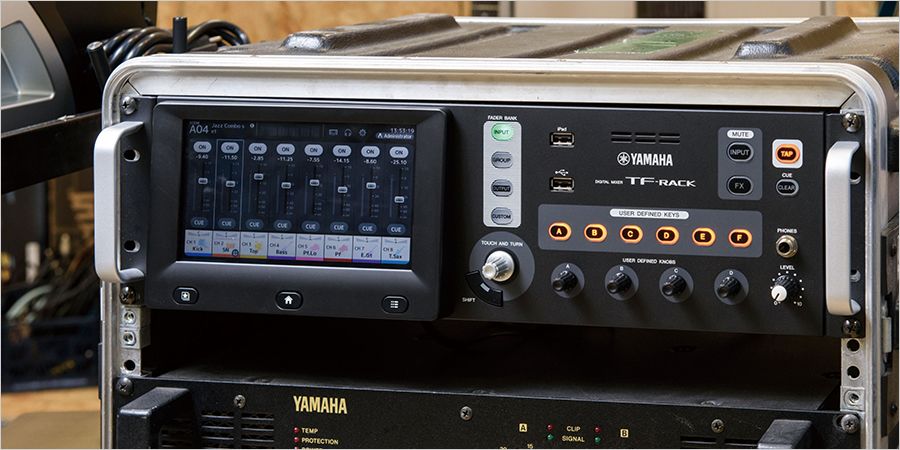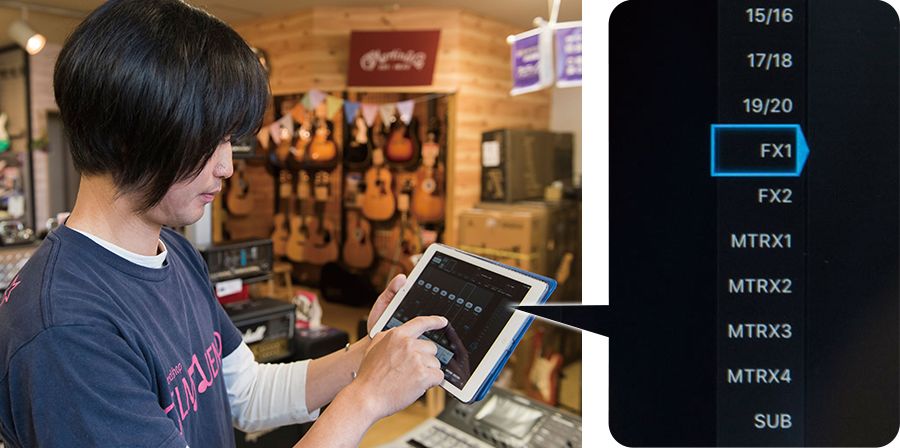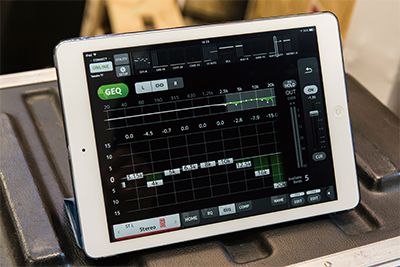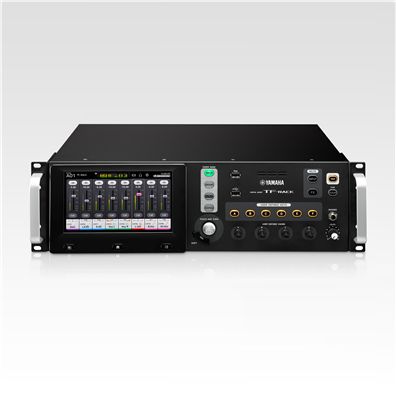Yamaha TF Series, a Digital Mixer Gaining Trust in Various Scenes - Uenogakki Sound Shop GELM

Yamaha’s TF series, a digital mixer for PA’s, are characterized with operability and compact bodies by their touch panels and their application for the iPad. For this interview, We have visited Uenogakki SoundShop GELM, which owns a 3U rack type model of the TF-RACK.
Using it as a Main Mixer for Small and Medium Sized Live Shows
Based in Utsunomiya city, Japan, Uenogakki SoundShop GELM develops instrument stores and music schools. Established in 1956, it conducts a wide range of businesses from selling/repairing musical instruments to operating rehearsal studios and music schools, as well as renting audio equipment.
Uenogakki SoundShop GELM is a store located in approximately a 10 minute walking distance from JR Utsunomiya station. While guitars, basses, and drums are being displayed in the store, what are the uses of the TF-Rack? “First of all, we are using it as a main mixer upon performing PA at our music schools and their recitals. When we are in charge of the audio systems at local events, we use it as a main mixer in such cases too” says Mr. Seijiro Saito, a staff member of the store. He said that they had used an analog mixer until last year, but they installed the TF-RACK after a certain event.
“A certain automobile company held a promotional exhibit in the end of last year, and we were offered to perform PA, as one of its contents was a jazz band live performance. However, I had to stock machinery and materials, as well as operating them all by myself, and so I wanted the system to be simple as possible, since the progress of the schedule was only roughly predicted. Carrying a massive set alone would be difficult, and I had imagined that I had to operate it while assisting musicians, if I don’t know how long I can spend on setting up the equipment. Therefore, I needed a flexible system where I was able to move around. When I was thinking to myself, “What shall I do?”, I heard from my acquaintance that “he is interested in a mixer called TF-RACK”, so I checked out the catalog and something clicked inside me.”
What appealed to Mr. Saito the most was an iPad application for the TF series that allows wireless control. “With this, I can operate the system from anywhere, without staying next to the mixer all the time. This enables me to support the performers whilst still creating acoustics.” he says.
“The TF StageMix is really easy to use, even for a beginner digital mixer like me. Let’s say I want to add a reverb to a certain channel. What I need to do is to select “FX1” or “FX2” from the column in the right of the screen, set the fader as send mode, and to raise the target channel.
That’s it. There is no need to patch a channel with an internal reverb, which makes it easy to understand. What is intuitive as an operation peculiar to touch panel, is that you can widen or narrow Q-width in parametric EQ with just your fingertips. In the age where even cellphones have touch panels, it is nice to be able to control sound with that technology. Although the body of TF-RACK has a touch panel and some handlers, personally, having the TF StageMix itself is enough. The response to touch is quick, and I am currently operating by using the application only.”
Highlighting Points I Control with iPad Application
How Mr. Saito uses the TF StageMix, an Apple iPad application for the TF series. He likes the quick operational feeling, which changes the fader as FX send mode by pressing “FX1” or “FX2” display in the right of the screen.

Easy to Carry Around and Set Up
SAlthough the TF StageMix is a common application with the surface model, some may say that the advantage of the TF-RACK is its “small and light sized body.”
“I usually carry the TF-RACK in a rack after connecting it with a power amplifier (as shown in the main picture). For the moment, I only need to carry a 5-6U rack with about 4 speakers for the main and the monitor. In regards to routing, one can easily connect the amplifier’s main-out L/R to the main speakers, and the TF-RACK’s line-out L/R to the monitor speaker Yamaha Stagepas 400i. I think that this speedy set up is also an advantage.”
This interview was taken place at the end of May 2017, but the firmware update that is to be held June had already been announced at the time. DAN DUGAN’s automatic mixer would be implemented in the new Ver.3.5 firmware. It automatically optimizes gain balances of microphone lines with a maximum of 8 channels immediately, which enables a natural mix.
“I am very interested in the automatic mixer. There are some where chorus groups and brass bands assemble, and so I would like to use it in such scenes. I think the cost performance is outstanding considering that in this compact body contains a mixer, effects, automatic-mixer, and many more all in one.” With the evolving TF-RACK, it shall continue to increase its presence more than ever in small and medium scenes.
Highlighting Points II Internal Graphic EQ
Although I could not cover in this article, TF StageMix’s internal graphic EQ is also Mr. Saito’s favorite. This feature is preinstalled in each output channel, including the AUX and the matrix, let alone the master channel, so it does not require you to prepare several outboard graphic EQ units.

From the June 2017 edition of the monthly Sound & Recording Magazine. Photograh by Yusuke Kitamura.
Related Products
Location
Tokyo, Japan



